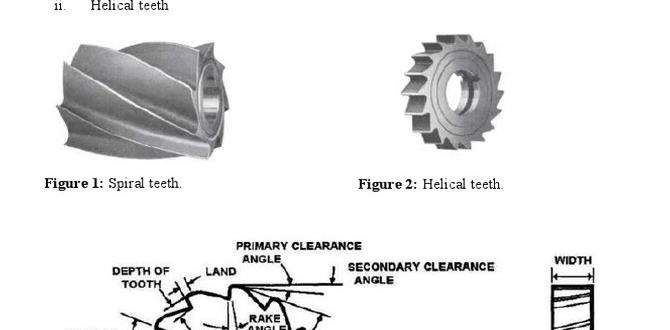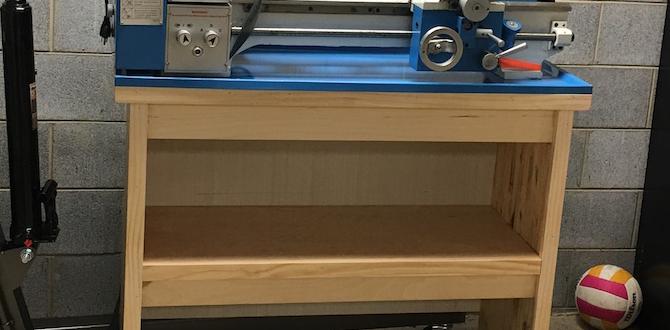A 1/8″ carbide end mill is essential for machining stainless steel because its hardness and rigidity allow it to cut tough materials effectively, minimizing chatter and ensuring clean finishes, especially in precise applications.
Working with stainless steel can be a real challenge, can’t it? It’s tough, galls easily, and can make even experienced machinists sweat. But what if I told you that one small tool could make a world of difference? That tool is the 1/8″ carbide end mill. Many folks ask about the best way to tackle stainless, and this little workhorse is often the secret weapon. It’s not just another bit; it’s precision engineered for those difficult cuts. We’re going to walk through why this specific size and material are so good for stainless steel and show you how to use it like a pro.
Why a 1/8″ Carbide End Mill is Your Stainless Steel Best Friend
Choosing the right cutting tool is crucial, especially when you’re dealing with a material as stubborn as stainless steel. This isn’t like cutting softer metals or even some plastics. Stainless steel is known for its strength, heat resistance, and tendency to work-harden. This means it gets tougher the more you cut it! This is where a 1/8″ carbide end mill shines.
The Magic of Carbide
Let’s talk about carbide. It’s a composite material, normally tungsten carbide powder mixed with a binder like cobalt, pressed and then sintered. What does this mean for you at the machine? It means:
Extreme Hardness: Carbide is significantly harder than high-speed steel (HSS). This allows it to cut through tough materials like stainless steel without dulling as quickly.
Heat Resistance: Stainless steel generates a lot of heat when being machined. Carbide can withstand much higher temperatures than HSS, which is vital for preventing tool breakage and maintaining cut quality.
Rigidity: Because carbide is so hard, it’s also very rigid. This means less flex and vibration when cutting. Less vibration translates to less chatter, a cleaner surface finish, and a more predictable cut. This is especially important with smaller diameter tools.
The Significance of 1/8 Inch
Now, why specifically a 1/8″ (0.125 inch) diameter? This size offers a fantastic balance for many stainless steel machining tasks:
Detail and Precision: A 1/8″ end mill is perfect for milling small features, slots, pockets, or contours. It allows for intricate work that larger end mills simply can’t achieve. For many hobbyists and even professional shops, this size is indispensable for detailed parts.
Manageable Chip Load: While you want to remove material efficiently, you don’t want to overstress your tool or machine. A 1/8″ end mill, when used with appropriate speeds and feeds, allows for a manageable chip load that still allows for reasonable metal removal rates (MRR) without being overly aggressive for smaller machines or setups.
Reduced Cutting Forces: Smaller diameter tools generally exert less force on the workpiece and the machine’s spindle. This is a big advantage when working with materials like stainless steel on less powerful milling machines or when fixturing is limited. It also means less risk of bending or breaking delicate parts.
Access to Tight Spaces: For complex assemblies or repairs, a 1/8″ end mill can often reach areas that larger tools would miss.
The “Standard Length” Advantage
When we talk about a “standard length” 1/8″ carbide end mill, it generally refers to a tool with a cutting length that’s proportional to its diameter – typically 2 to 4 times the diameter. For a 1/8″ end mill, this means a cutting length of roughly 1/4″ to 1/2.
Minimized Deflection: Shorter tools are inherently more rigid. A standard length 1/8″ end mill will deflect less under cutting forces compared to an “extended reach” or “long flute” version. This is crucial for maintaining accuracy and preventing tool breakage with hard materials.
Simplicity and Cost-Effectiveness: Standard length tools are the most common and are usually more economical. For most general-purpose machining of stainless steel, they provide the best combination of performance and value.
Understanding Stainless Steel Types and Their Machining Needs
Not all stainless steels are created equal, and understanding their differences is key to successful machining. The most common types you’ll encounter for DIY and hobbyist projects are Austenitic (like 304 and 316), Ferritic, Martensitic, and Duplex.
Austenitic Stainless Steels (304, 316)
These are the most widely used types, known for their excellent corrosion resistance and formability.
304 Stainless Steel: This is the workhorse. It’s versatile, readily available, and good for general fabrication, cookware, and architectural components. However, it can work-harden significantly and has a tendency to gall.
316 Stainless Steel: Often called “marine grade,” 316 has added molybdenum, which significantly increases its resistance to corrosion, especially from chlorides and other salts. It’s ideal for harsh environments, medical implants, and marine hardware. Machining 316 can be slightly more challenging than 304 due to its higher strength and tendency to gall.
For 316 stainless steel, achieving a high MRR (Material Removal Rate) with a 1/8″ carbide end mill requires careful attention to speeds, feeds, and cutting strategies, as its increased toughness demands a robust approach.
Machining Challenges of Stainless Steel
Galling: This is when the workpiece material transfers from the chip to the cutting tool’s edge. It dulls the tool rapidly and can ruin the surface finish. This is a major problem with stainless.
Work Hardening: As mentioned, stainless steel becomes harder and stronger the more it’s deformed or cut. This can lead to tools digging in or losing their sharp edge quickly.
Low Thermal Conductivity: Stainless steel doesn’t dissipate heat well. The heat generated during cutting tends to build up at the cutting edge, causing premature tool wear and potential damage.
Toughness and Strength: Stainless steel is simply strong. It requires more force to cut compared to materials like aluminum or mild steel.
This is precisely why a 1/8″ 316 carbide end mill is so critical. Its hardness, rigidity, and ability to handle heat make it far superior to HSS for these demanding applications.
Essential Tools and Setup for Using a 1/8″ Carbide End Mill
Before you even think about pressing the start button, let’s make sure you have the right setup. Using a small, delicate tool like a 1/8″ carbide end mill requires precision and care.
Your Milling Machine Setup
Milling Machine: Whether it’s a small benchtop mill or a larger industrial machine, ensure it’s in good working order. Spindle runout should be minimal.
Collet Chuck or Precision Collets: This is non-negotiable for holding a small end mill. A standard drill chuck will not provide the runout accuracy needed. ER collets or a high-quality collet chuck are ideal. Aim for runout less than 0.0005 inches.
Workholding: A sturdy vise is usually the go-to. Ensure the vise jaws are clean and the workpiece is securely clamped without distorting it. If the part is thin, consider using a parallel or clamping on a robust feature. Avoid overtightening, which can deform thin stainless steel.
Coolant/Lubricant: Machining stainless steel without proper lubrication is asking for trouble.
Flood Coolant: The best option if your machine supports it.
Mist Coolant: A good compromise for smaller machines.
Cutting Fluid/Paste: For manual applications or small jobs, brush on a good quality cutting fluid designed for stainless steel or aluminum. Avoid general-purpose lubricants; you need something that can handle the high pressure and heat.
The 1/8″ Carbide End Mill Itself
Material: Ensure it’s carbide. For stainless, look for end mills designed for harder steels.
Flute Count:
2 Flutes: Generally preferred for stainless steel. They provide more chip clearance, which is essential for sticky materials like stainless, and are good for slotting and profiling.
3 or 4 Flutes: Can sometimes be used for finishing passes or lighter cuts, but 2-flute tends to be more forgiving for general stainless steel work with smaller end mills.
Coating: While not strictly necessary for very light hobby use, coatings like TiN (Titanium Nitride) or AlTiN (Aluminum Titanium Nitride) can improve tool life and performance, especially when dealing with the heat of stainless steel. AlTiN is generally better for higher-temperature applications like stainless.
Shank: A standard plain shank is fine for most applications. If you’re using a collet chuck, ensure the shank fits your collet.
Tool Length: As discussed, standard length is best for rigidity.
Measurement and Inspection Tools
Calipers: For measuring your workpiece and verifying dimensions.
Micrometers: For more precise measurements.
Magnifying Glass/Microscope: To inspect the cutting edge for wear or chipping between operations.
Edge Finder or Probe: To accurately locate your workpiece zero on the milling machine.
Step-by-Step Guide: Milling Stainless Steel with a 1/8″ Carbide End Mill
Let’s get down to the brass tacks – or in this case, the stainless steel. Here’s a process to follow. Remember, this is a guide; always listen to your machine and your tool.
Step 1: Secure Your Workpiece
Clean your vise jaws and the workpiece.
Place parallels under your workpiece if it’s thin or to raise it to a better height for the vise.
Position the workpiece in the vise, ensuring it’s seated firmly against the vise jaw and the parallels.
Tighten the vise firmly. You want it secure, but don’t deform thin stainless steel. For very thin parts, consider a soft jaw or vacuum chuck if available.
Step 2: Set Up Your Machine and Tool
Install a clean, high-quality collet into your collet chuck.
Insert the 1/8″ carbide end mill into the collet. Ensure it’s inserted to a consistent depth.
Tighten the collet nut securely.
Mount the collet chuck/tool holder into your milling machine spindle.
With the spindle off, use an edge finder to locate the edge of your workpiece precisely. Note the X and Y coordinates for your program or manual control.
Use the edge finder or a depth probe to find the Z-zero (top surface of your part).
Step 3: Apply Lubrication
If using a flood or mist coolant system, turn it on.
If using manual application, liberally brush cutting fluid onto the area where the cut will occur and on the tool itself. Reapply as needed. This is vital for stainless steel.
Step 4: Determine Speeds and Feeds (The Tricky Part!)
This is where experience and good reference material come in handy. For stainless steel, you generally need slower spindle speeds (RPM) and moderate feed rates compared to softer metals.
General Guidelines for 1/8″ Carbide End Mill on Stainless Steel (316):
Spindle Speed (RPM): Start conservatively. For a 1/8″ carbide end mill, you might be in the range of 1000–3000 RPM. This depends heavily on the specific alloy and machine rigidity.
Feed Rate (IPM or mm/min): This is the speed at which the cutter moves through the material. For a 1/8″ end mill, aim for a chip load of 0.001″ to 0.003″ per tooth.
With a 2-flute end mill, this equates to a feed rate of approximately 2000 to 6000 RPM 0.001″ to 0.003″ 2 flutes = 4 to 36 IPM (inches per minute).
Start at the lower end of this for 316.
Depth of Cut (DOC): For slotting (full width of the end mill), use a shallow DOC, maybe 0.050″ to 0.100″. For light profiling or pocketing, you can go a bit deeper, but always err on the side of caution. A radial depth of cut (stepover) of 0.020″ to 0.050″ is typical for profiling.
Example Calculation for 316 Stainless Steel:
Let’s say you have a 1/8″ 2-flute carbide end mill and want to slot 0.100″ deep. Your machine can reliably achieve 2000 RPM.
Target chip load: 0.0015″ per tooth.
Feed rate = RPM Number of Flutes Chip Load
Feed rate = 2000 RPM 2 flutes 0.0015″/tooth = 6 IPM.
Important Resources for Speeds and Feeds:
Always consult manufacturer data or online calculators. Here are some reputable sources:
G-Wizard Calculator: A well-regarded software tool (paid) that provides comprehensive speeds and feeds for various materials and tools.
Manufacturers’ Websites: Many end mill manufacturers (e.g., Kennametal, Sandvik Coromant, Guhring) provide downloadable catalogs or online tools with recommended parameters. The National Institute of Standards and Technology (NIST) also has valuable research. For a simpler approach, search for “speeds and feeds calculator carbide end mill stainless steel.
Step 5: Make the Cut
Plunge: If plunging straight into material, do so slowly and preferably at a ramp angle if your software or machine allows. A straight plunge can be hard on the tool. Use your calculated feed rate for plunging.
Engage: Move into the material using your calculated feed rate.
Listen and Watch: Pay close attention to the sound of the cut and the chips being produced.
Harsh, chattering noise: Too fast a feed rate, too shallow a depth of cut (rubbing), or a loose setup. Slow down the feed.
Burning or stringy chips: Too slow a speed, insufficient lubrication, or too high a feed rate.
Fine, powdery chips: Often a sign that you’re not taking enough material per tooth (light finish cut), or your feed is too slow.
Nice, uniform chips (like small curled pieces): This is typically what you want to see.
Chip Evacuation: Ensure chips are being cleared from the flute and from the cutting area. This is why good lubrication and fluting are important. For deep pockets, consider helical interpolation or peck drilling (if plunging is required) to help clear chips.
Withdraw: Once the cut is complete, retract the tool cleanly from the workpiece.
Step 6: Inspect and Repeat
Stop the machine.
Clean the chips away from the workpiece.
Inspect the cut surface finish.
Examine the cutting edge of your end mill under magnification if possible. Look for signs of chipping, excessive wear, or material buildup (galling).
If satisfied, reposition for the next cut or operation. If you notice any issues, adjust your speeds, feeds, or depth of cut, and consider changing the tool if it shows significant wear.
Optimizing for High MRR on Stainless Steel
Achieving a high Material Removal Rate (MRR) with a 1/8″ end mill on tough materials like 316 stainless steel is a balancing act. MRR is calculated as:
MRR = (Feed Rate) (Depth of Cut) * (Width of Cut)
To increase MRR, you need to increase one or more of these factors. However, doing so risks tool breakage, poor finish, or machine overload.
Strategies for Higher MRR:
1. Increase Feed Rate (within Chip Load Limits): This is often the first parameter to increase once you’ve found a stable cutting speed. Stick to the recommended chip load per tooth. Don’t try to force it beyond what the tool can handle.
2. Increase Depth of Cut (DOC): This is more effective for slotting. If your machine is rigid and you have good chip evacuation, you might be able to increase the DOC. However, with a 1/8″ end mill, “full depth” slotting is typically limited to about 1/2 the diameter (0.060″). Pushing this is risky.
3. Increase Width of Cut (Stepover): For profiling or pocketing, a larger stepover reduces the number of passes needed, indirectly increasing MRR over the course of the job. However, too large a stepover can lead to poor surface finish or tool overload, especially with a small diameter tool. For efficient pocketing, a stepover of 30-50% of the tool diameter is common. For finishing, you’ll reduce this significantly (e.g., 5-10%).
4. Utilize Helical Interpolation: For milling large pockets, instead of plunging straight down, you can use a helical motion. This smoothly ramps the tool into the material, reducing plunge stress and allowing for a more aggressive feed.
5. Optimize Tool Selection: Ensure you’re using a high-quality carbide end mill specifically designed for stainless steel and with a coating suitable for high-temperature cutting (like AlTiN).
6. Machine Rigidity and Power:** A more rigid machine with a powerful







